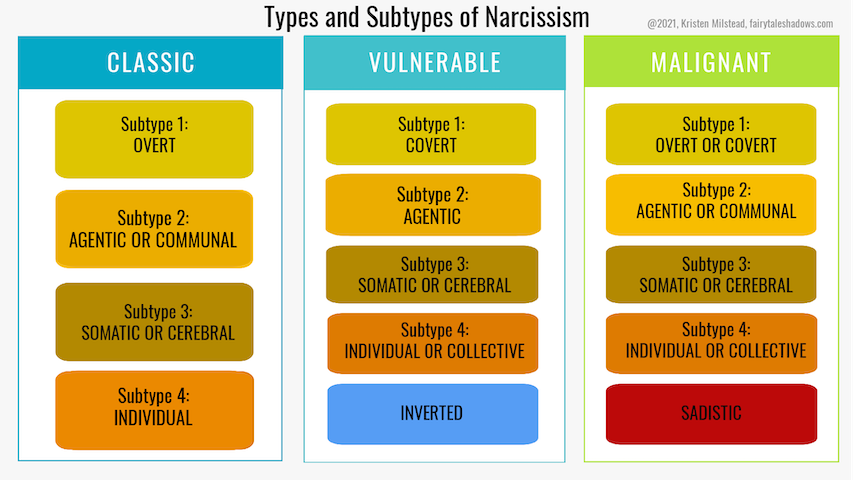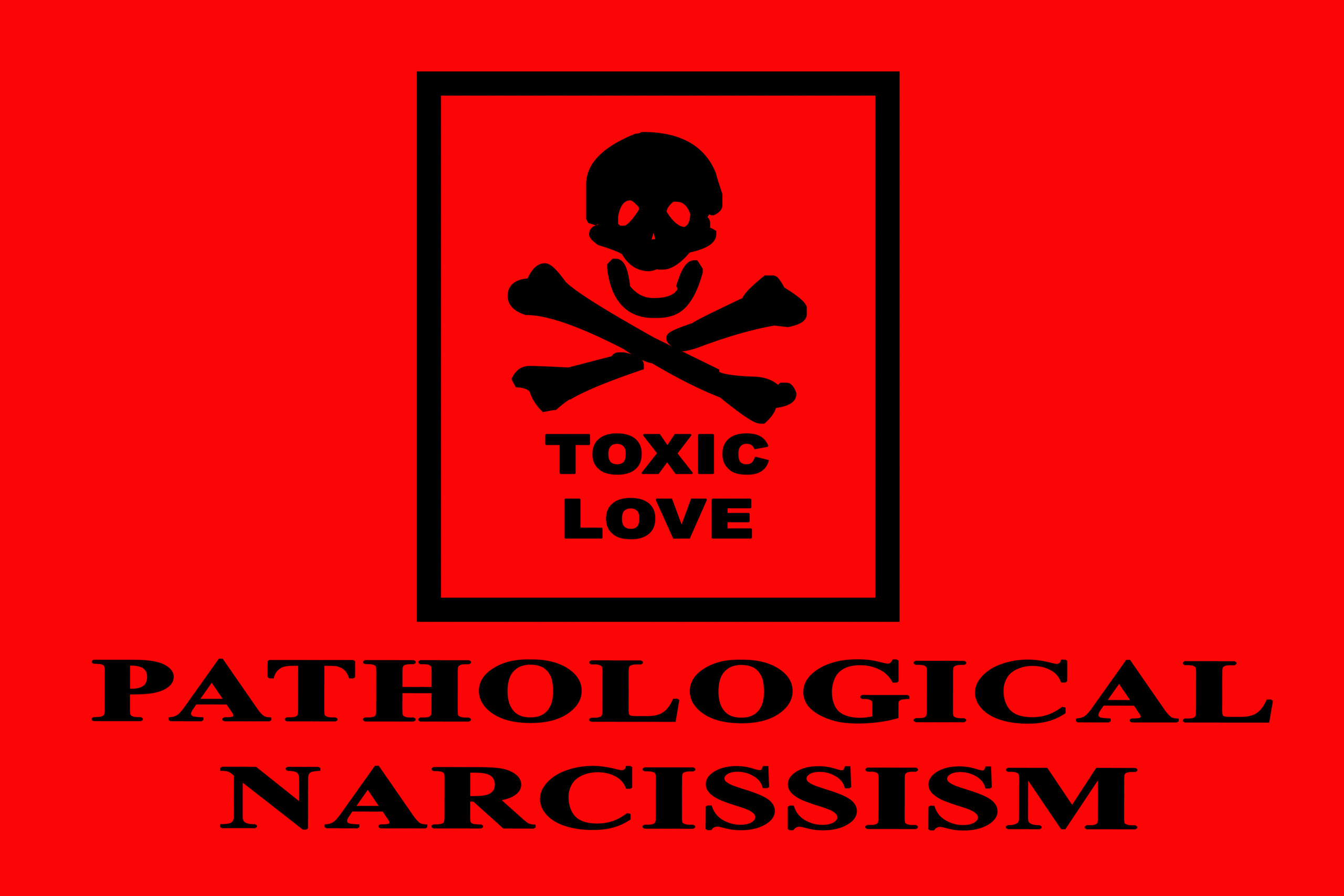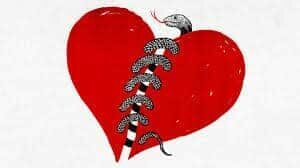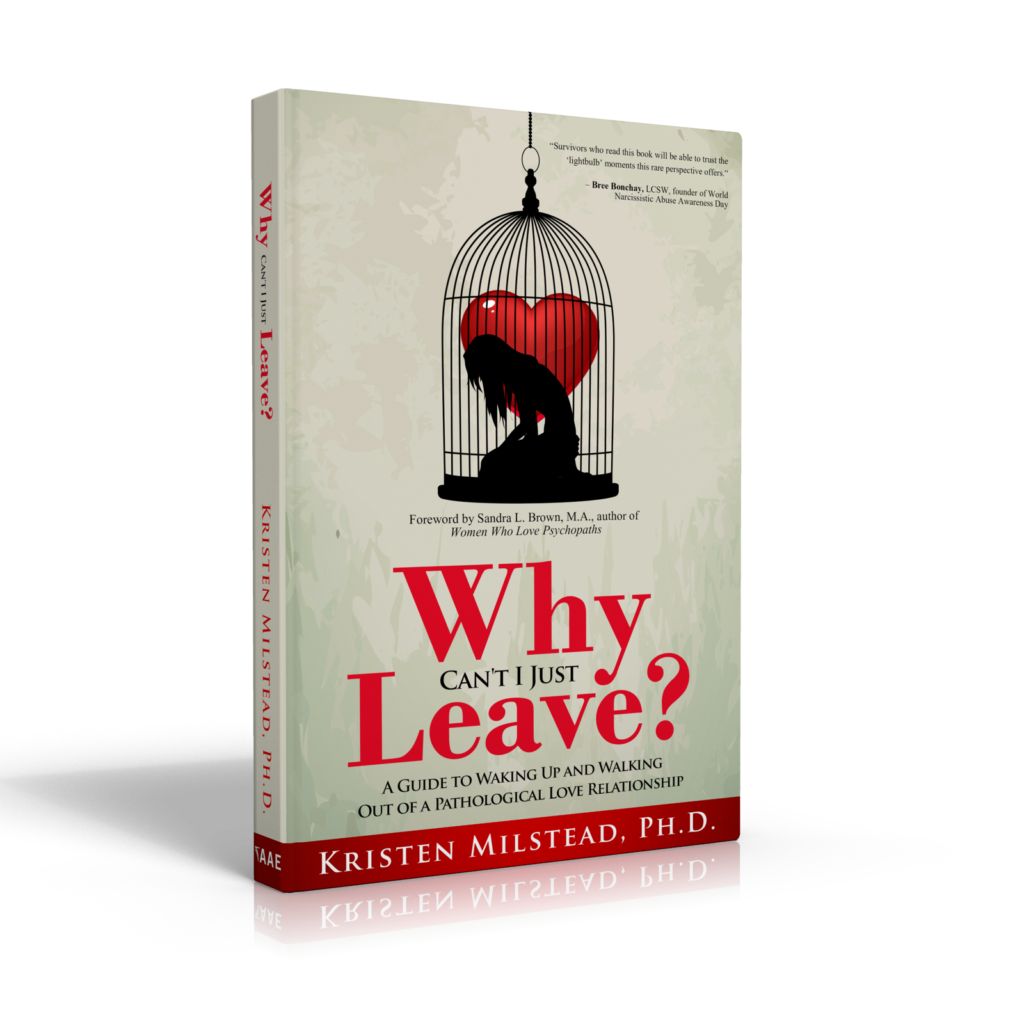There are so many different types of narcissism that exist. It can be confusing trying to sort out their qualities and behaviors.
In addition, what can sometimes make it even more unclear is that narcissism is often treated only as a negative quality.
However, Harvard psychologist Craig Malkin (2015) indicates that narcissism is a spectrum trait. On one end lies healthy narcissism, and on the other lies unhealthy narcissism.
The spectrum can tell us a lot about how people prioritize their own emotions and needs. Someone without healthy narcissism has difficulty standing up for themselves and always puts other people first.
However, people who fall on the unhealthy narcissism end of the spectrum may meet the criteria for Narcissistic Personality Disorder (NPD). [See The Ultimate Narcissistic Abuse Dictionary to review unfamiliar terms]
They cannot treat other people’s needs, desires, and emotions as if they were as important and valuable as their own.
However, even among those with narcissistic personality traits, all narcissism is not “created” equally. One person with NPD may think and react differently than another person with the same disorder.
What is a Narcissist?
The criteria for the disorder in the Diagnostic and Statistical Manual of Psychiatric Disorders (2013), which mental health providers use to diagnose their patients, include:
- An inflated sense of self, which provides them with the belief that they are superior, and an expectation that others should treat them as more important;
- Unrealistic and pervasive fantasies of being rich, famous, powerful, or of being excessively beautiful, admired, and envied;
- A belief that they are extraordinary and can only relate to other “special” or high-status people;
- A desperate need for excessive attention and admiration;
- A sense of entitlement and belief that others should automatically comply with their expectations;
- A willingness to exploit others in their interpersonal relationships to get what they want;
- A lack of empathy for the circumstances and feelings of others;
- Pathological envy of other people or a belief that other people envy them;
- An arrogant attitude;
Someone with NPD needs to have only five out of these nine criteria to be labeled a narcissist.
As a result, different combinations of the traits result in different types of narcissism.
Identifying 13 Different Types of Narcissism
Despite the nine criteria laid out in the DSM, many resources that describe narcissism use labels for different types of narcissism in ways that overlap and contradict one another. This overlap makes it difficult to tell how many different types exist.
This article does three things:
- identifies and compiles the types of narcissism from medically reviewed and other resources into one master list;
- describes and explains the characteristics of each of the types, including the overlap between them; and
- organizes them into the major types and their subtypes (or dimensions).
Using this approach, I have identified three major types of narcissism and ten subtype categories for a total of thirteen types of narcissism.
Narcissists may belong to one of the three major types: classic, vulnerable, or malignant. They may then further qualify as one or more sub-types.

The major type determines the subtypes into which a narcissist can be classified. Some sub-types’ characteristics are not compatible with how a major type displays itself.
- Subtype 1 (Overt or Covert)
- Subtype 2 (Agentic or Communal)
- Subtype 3 (Somatic or Cerebral)
- Subtype 4 (Individual or Collective)
Sadistic and Inverted Narcissists are special sub-type designations of other major types.
The Three Major Types of Narcissism
-
Classic Narcissism
Classic Narcissism is also known as High-Functioning Narcissism, Exhibitionist Narcissism, or Grandiose Narcissism. These are the typical narcissists that most people think of when they hear the term “narcissist.”
They are the attention-seeking narcissists who brag about their accomplishments, which may or may not be real (Bressert, 2017; Ettonsohn, 2016; Greenberg, 2016).
Classic Narcissists also expect others to flatter them and feel entitled to special treatment. They get bored when they are not the focus of the conversation and don’t like to share the spotlight with others.
The irony is that they are desperate to feel important, and at the same time, they often perceive themselves as superior to most people they meet.
-
Vulnerable Narcissism
Vulnerable Narcissism is also known as Fragile Narcissism, Compensatory Narcissism, Victim Narcissism, or Closet Narcissism. There are some similarities among these narcissists with the classic narcissist (Bressert, 2017; Ettonsohn, 2016; Greenberg, 2016).
They also have difficulty focusing on others’ needs and emotions and feel as if they are superior to most people they meet. Yet, they actually despise the spotlight and try to stay out of it rather than seeking out admiration.
Classic narcissists seek out grandiosity, while vulnerable narcissists only fantasize about it. The avoidance that vulnerable narcissists feel toward attention is due to their hypersensitivity.
Although they feel they deserve special recognition, vulnerable narcissists don’t feel they will receive it if they put themselves out there. They don’t want to put themselves in a position to be criticized.
They often try to attach themselves to special people instead of seeking special treatment themselves. Doing this provides them with the opportunity to receive some of the attention they crave without making themselves the center of it.
Levels of happiness differ between classic and vulnerable narcissists; vulnerable narcissists are not as happy as classic narcissists.
Classic narcissists appear to mostly remain blind to others’ opinions because they are always acting on their self-entitlement. Vulnerable narcissists, however, always feel as if they are not getting what they deserve (Rose 2002).
-
Malignant Narcissism
Also known as Toxic Narcissism, malignant narcissists are highly manipulative and exploitative.
From an NPD perspective, their traits may resemble either a classic narcissist or a vulnerable narcissist. What makes them malignant narcissists is that they also meet some antisocial personality disorder (DSM-V, 2013) criteria.
They are antagonistic and hostile. A malignant narcissist’s primary goal is often to dominate and control to make sure they can get what they want. They will use deceit and aggression to accomplish it, and they lack remorse for their actions.
Malignant narcissists may also ignore laws and moral standards that would hold most people back from doing things they know would hurt others.
They may even enjoy the suffering of others.
Narcissist Sub-Types
Narcissist subtypes are not standalone types of narcissists.
They figure into one of the three major types of narcissists above by providing information about different behavioral dimensions. The subtypes indicate how a narcissist presents themselves, how they think, or their goals.
Sub-Type 1
-
Overt vs. Covert
This sub-type describes whether the narcissist’s actions are more openly observable or whether they are hidden and harder to detect.
Both overt and covert narcissists may put people down and look for opportunities to take advantage of people. Overt narcissists, however, do so in unmistakable and noticeable ways.
Covert narcissists work behind the scenes or are more passive-aggressive. Others may come away from an encounter with a covert narcissist, not knowing the covert narcissist manipulated them.
Sometimes the covert narcissist’s tactics may be harder to spot. This hidden abuse may allow him or her to deny what happened.
Classic narcissists will always be overt narcissists, and vulnerable narcissists will always be covert narcissists. However, malignant narcissists could be either.
Many researchers do not appear to distinguish between covert narcissists and vulnerable narcissists. Other researchers, however, argue for a distinction between the two because malignant narcissists can operate covertly.
For example, a malignant narcissist may make statements to attack someone’s self-esteem, such as, “That’s a good major for you given your abilities” or “That outfit really flatters your body type, but I could never wear something like that.”
Sub-Type 2
-
Agentic vs. Communal
Some narcissists gain narcissistic supply by doing things to benefit others. This narcissist sub-type is called a communal narcissist (also known as an altruistic narcissist).
As all narcissists do, they love feeling important. Yet, they bask in the attention and praise they receive for the good things they are doing on behalf of their friends, family, or community.
Contrary to the narcissist stereotype, these types of narcissists might be some of the biggest charity donors or do a lot of volunteer work (as long as everyone knows about it).
In your personal life, the communal narcissist always willing to lend their help–even when you don’t ask for it. They want to be in the middle of everything, micro-managing it all. In their view, no one knows how to do anything without them. If you don’t want their help, they take it as a narcissistic injury–because it was never about you in the first place.
In contrast, an agentic narcissist is a typical narcissist whose immediate behavior benefits themselves directly and openly (Nehrlich, A.D., et al., 2019). Communal narcissism is related to grandiosity and is a subtype of the classic narcissist.
Sub-Type 3
-
Somatic vs. Cerebral
This sub-type defines what the narcissist primarily values in himself or herself and others. Neither sub-type wants to be outshined by their partner.
Yet, they want someone around to enhance their standing. To narcissists, their partners are status symbols they can show off as objects (Vaknin 2015).
Somatic narcissists are obsessed with their bodies, youth, and external appearance. They often spend a lot of time at the gym and in front of mirrors.
Cerebral narcissists are the know-it-alls. They think of themselves as the most intelligent ones in the room, trying to impress people with their accomplishments and positions of power.
Any of the three types of narcissists—classic, vulnerable, or malignant—can be either of these two sub-types.
Some writers classify cerebral narcissists as vulnerable narcissists only and somatic narcissists as classic narcissists only.
Others argue that this is a stereotype because of the connections people tend to make between the body being “physical” and out in public view, while the mind, being “mental,” is more hidden.
These associations, however, don’t take into account other scenarios. Vulnerable narcissists may use their bodies to get their needs met, such as through physical illness.
Classic narcissists may be cerebral narcissists and seek attention for their educational status or accomplishments, for example.
Sub-Type 4
-
Individual vs. Collective
Collective narcissism is narcissism that a person develops based on membership in a group (Agnieszka and Lantos 2020). The collective narcissist believes that the group they belong to has some exceptional qualities that make the group (and by default, him or her) superior to others.
The collective narcissist also believes that the group is not being treated as superior by others, which makes other groups a threat.
Collective narcissism has been found among members “national, ethnic, ideological, and religious groups; professional organizations; football teams; students of the same university; gender (men); and fictitious groups,” according to Agnieszka and Lantos.
The collective narcissist is a subtype of the vulnerable narcissist. These vulnerable narcissists have attached themselves to their group identity to feel special.
Collective narcissists are hypersensitive and have low self-esteem. After a social upheaval, they may use their group identity to bolster their self-image.
The collective narcissist is contrasted with the individual narcissist. Individual narcissists feel self-entitled because of special qualities they possess independent of their identity in any demographic or social group.
While collective narcissists are specific to vulnerable narcissism, the individual narcissist can be a subtype of any of the three major types of narcissism.
Special Sub-Types
-
Inverted
Some researchers have identified a special type of covert, vulnerable narcissist called an inverted narcissist. These narcissists are codependent.
They attach themselves to other narcissists to feel special. The only time they feel satisfied is when they are in relationships with other narcissists. They are victim-narcissists who suffer from childhood abandonment issues.
-
Sadistic
This special type of malignant narcissist is similar to sociopaths and psychopaths. [Read: Narcissist, Sociopath or Psychopath: What’s the Difference?]
As with sociopaths and psychopaths, they also take pleasure in hurting people. In addition, their purpose in interacting with others is always to control. They enjoy humiliating others and may have unusual sexual fetishes.
Caution: The Trap of Different Types of Narcissism
When you’re in the middle of a relationship with a narcissist, few things make sense. Arming yourself with information about different types of narcissism is crucial. [Read: Why We Read about Narcissism When We’re Trying to Heal]
If we aren’t aware that not all narcissists behave in the same ways or have the same goals, reading about narcissistic abuse is confusing and can lead to even more questions.
When we read something about narcissism that doesn’t seem to describe our partner, we may hold out hope that perhaps our partner isn’t a narcissist after all. What we read may help us deny our abuse when we are struggling with cognitive dissonance. [Read: Why Cognitive Dissonance is Trauma to Narcissistic Abuse Survivors]
Yet, there is also a danger in going too far in the other direction as well.
At the opposite extreme is the obsession with categorizing our partners down to the exact narcissistic type before we will allow ourselves to leave. In this case, the need for certainty has taken the place of the lack of it.
No external resource can ever validate your personal experience. Only you can do that. It doesn’t matter how many articles you read or online tests about narcissistic abuse that you take. [Read: The Narcissist Test: A Quest for Answers]
Once you’ve gotten the point–that your partner’s behavior is indeed abusive, let the knowledge that your partner is a toxic person and that you are suffering because of it be enough.
Join the community to get more articles like this one delivered straight to your inbox.
If you like this article, you’ll also enjoy these:
- If You’re in Love with a Narcissist, You’re in a Cult
- 11 Crazy Things You May Do Before Going No Contact
- How to Know When a Narcissist is Finished with You
- What a Narcissist Says About Breakups: They Never Let You Go
- Love Bombing: Signs You’re in Danger
Sources
Agnieszka, Golec de Zavala and Lantos, Dorottya. (2020). Collective Narcissism and Its Social Consequences: The Bad and the Ugly. Current Directions in Psychological Science. 29(3): 273-8.
American Psychiatric Association. (2013). Diagnostic and Statistical Manual of Mental Disorders, Fifth Ed. (Arlington, VA: American Psychiatric Association).
Bressert, S. (2017). Narcissistic Personality Disorder. Psych Central. Retrieved on March 7, 2018, from https://psychcentral.com/disorders/narcissistic-personality-disorder/
Ettensohn, Mark. (2016). Unmasking Narcissism: A Guide to Understanding the Narcissist in Your Life. Berkeley, CA: Althea Press.
Greenberg, Elinor. (2016). Borderline, Narcissistic, and Schizoid Adaptations: The Pursuit of Love, Admiration, and Safety. CreateSpace Independent Publishing Platform.
Malkin, Craig. (2015). Rethinking Narcissism. New York: Harper Wave.
Nehrlich, A.D., Gebauer, J. E., Sedikides, C., & Schoel, C. (2019). Agentic narcissism, communal narcissism, and prosociality. Journal of Personality and Social Psychology, 117(1), 142–165.
Raskin, Robert N., Hall, Calvin S. (October 1979). “A narcissistic personality inventory.” Psychological Reports. 45 (2): 590.
Raskin, Robert and Terry, Howard (1988). “A principal-components analysis of the Narcissistic Personality Inventory and further evidence of its construct validity.” Journal of Personality and Social Psychology. 54(5): 890-902.
Rose, Paul. (2002). “The happy and unhappy faces of narcissism.” Personality and Individual Differences. 33(3): 379-391.
Vaknin, Sam. (2015). Malignant Self-Love: Narcissism Revisited. Narcissisus Publications: Skopje, Macedonia.
A version of this article appeared online at Mindcology.






7 Comments
Anette
If one read deep into the BPD diagnosis you will find traits from every part of the DSMV spectrum in that diagnosis: evasive, dependant, narcissistic and maniac disorders.
That’s why it’s so difficult to diagnose.
Borderline can have narcissistic traits, especially when not treated. They can wiggle the therapist around their fingers as well and f*CK with the relationship. Borderline patients and in reality – every heavily traumatized person – have physical changes in their amygdala, hippocampus and prefrontal cortex…
Borderline especially suffers from abandonment issues as well as some might know. Maybe it will be of use to others on this blog to know that 🙂
Sade
So spot on it’s scary! I’ve researched read so many blogs,articles.This is the first time someone has actually hit everything on the nail.Thank you kristen’s.Great work❤
Xie
The second example you have in the first part of this article seems closer to the actions of someone with BPD, not narcissism. The rest of your examples and explanations make sense, but the case you present doesn’t fit because she actually cares about the other person and is acting out of perceived abandonment. Maybe this case would be an example of someone on a spectrum of narcissism, but I’m interested in how you have presented this case. As is, it seems her actions are motivated by fear of abandonment and she does have empathy, rather than her actions being driven by feeling superior or fearing her inadequacy will be revealed. NPD have no actual self worth and are constantly trying to prove it to themselves through affirmation from others or putting others below them. BPD are seeking a stable connection to another human so that they can feel stable within their own identity, and end up displaying symptoms that are often perceived as narcissistic.
Kristen Milstead
Hi Xie: You make a good comment. Some narcissists are able to care about others (which is the point of the example), however, they can shut off their empathy under certain circumstances. The example is attempting to convey that the woman has some of the characteristics of narcissism, such as a sense of entitlement to her partner giving unreasonable amounts of attention and does not show empathy for her partner’s feelings for going outside the relationship to get it because she feels entitled to this attention in a relationship in the first place and deems it his fault for not providing it. The example is meant as a point of comparison with the other example to show the range of behaviors and characteristics that lie on a spectrum of narcissism. Knowing that not all narcissists engage in similar types of harmful behavior or for the same reasons was extremely helpful for me in learning not to allow my partner to deny his abuse because it didn’t fit with every single thing I read. There are nuances out there (see the citations for more reading on that). I think that never actually knowing someone’s true intentions, and the fact that narcissists are so good at hiding theirs, is one of the reasons why it’s so difficult for people to leave these relationships in the first place. I really agree with you that the fear of abandonment issue in a person with BPD can look really similar in a lot of ways. I think it may look different in the degree of shame and regret expressed. Narcissists are often more confident about feeling justified about the pain they inflict because accepting they’ve done something wrong would mean feeling deep shame that they would have a difficult time accepting. Thanks for leaving a comment. -Kristen
standard oyster company
Way cool! Some very valid points! I appreciate you writing this article and the rest of the website is also really good.
Marnie
Mine was a malignant sadistic. Yay.
Max
Hi Kristen. I can’t put into words how happy I am that you decided to create your blog/site. I have read numerous online articles, sites, and books, but none have ever come too close to explaining what I was/am experiencing with my now ex. I feel to be among the minority as my ex is a female and most of the things I read are of the opposite gender. I’m also in a tough situation as we have two young children together, so “no-contact” is not an option. It’s definitely a tightrope walk, to say the least. It wasn’t until after I left her that I came across the word “narcissism”…and after a little research I realized that is what I was exposed to, which brought me to tears…literally. Regarding this article, she started out as a “vulnerable covert” narcissist, which then lead into a “malignant covert”, though she still retains the former at times. Thank you so much for introducing me to cognitive dissonance because this is what I’ve struggled with so much in the last few years and now I understand. What really brought it home is what you said about the relationship only really ending when I say it’s time because she will continue to abuse me otherwise. So simple a thought, but so very very true. BTW…I love the Instagram comic that shows the black/white rabbit(?) getting the lion out of its’ cage only to be ravaged by the lion. I laughed hard at that one because it’s so true as well. That’s what I get for being an empath I guess…lol. Thanks again and keep it up.